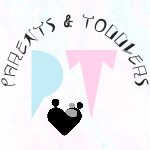An exciting and life-changing event is welcoming a new baby into your home. It’s vital to make sure that your house is a safe and secure setting for your new addition as you get ready to welcome this little bundle of joy. As your baby starts to explore the world around them, baby-proofing your house is a proactive measure that can help prevent accidents and injuries. We’ll go over the actions you can take to make sure your house is secure and prepared for the new addition in this gentle parenting blog.
Step 1: Start Early
Baby-proofing should begin well before your baby starts crawling or walking. Start by identifying potential hazards in your home during pregnancy or as soon as you decide to adopt or foster a child. This will give you ample time to make the necessary changes and adjustments.
Step 2: Conduct a Thorough Home Safety Assessment
Walk through your home room by room and identify potential hazards. Common hazards include sharp corners, electrical outlets, cords, toxic substances, and heavy furniture that could tip over. Be thorough in your assessment, and consider getting down on your hands and knees to view your home from a baby’s perspective.
Step 3: Secure Furniture and Appliances
To prevent accidents, anchor heavy furniture and appliances to the wall. Use safety straps or brackets to secure bookshelves, dressers, and TVs. This will prevent them from tipping over if your baby tries to climb on them.
Step 4: Childproof Electrical Outlets and Cords
Cover electrical outlets with safety caps or outlet covers. Tuck away cords and cables, or use cord organizers to keep them out of your baby’s reach. Babies are naturally curious, and electrical outlets and cords can pose serious risks.
Step 5: Install Safety Gates
Safety gates are essential for blocking off areas of your home that you want to keep off-limits to your baby. Use them at the top and bottom of staircases and to block access to rooms that are not baby-proofed.
Step 6: Secure Cabinets and Drawers
Use childproof locks and latches to prevent your baby from accessing cabinets and drawers containing cleaning supplies, sharp objects, or other potentially dangerous items. Install these on cabinets both high and low as babies can quickly learn to open them.
Step 7: Remove Small Objects and Choking Hazards
Babies love to explore by putting objects in their mouths. Keep tiny objects out of reach, including coins, buttons, and tiny toys. Regularly sweep the floor to remove any potential choking hazards.
Step 8: Baby-Proof Doors and Knobs
Install door stops or door holders to prevent little fingers from getting pinched in doors. You can also use knob covers to make it difficult for your baby to open doors.
Step 9: Cover Sharp Corners and Edges
Attach corner protectors or edge bumpers to tables, countertops, and other furniture with sharp corners. These can help prevent head injuries if your baby falls or bumps into them.
Step 10: Keep Toxic Substances Out of Reach
Store cleaning products, medications, and other toxic substances in high cabinets or drawers secured with childproof locks. Be vigilant about keeping potentially harmful items out of your baby’s reach.
Conclusion
In order to ensure the security and welfare of your new family member, it is essential to baby-proof your home. You’ll be able to create a safe atmosphere where your kid may explore, learn, and grow without incurring unnecessarily high risks by adopting these proactive actions. You may need to modify your baby-proofing tactics as your child grows and develops to account for their shifting abilities and interests. To give your child the safest home environment possible, be alert and stay ahead of potential dangers.







One thought on “Baby-Proofing Your Home: Preparing for the New Addition”